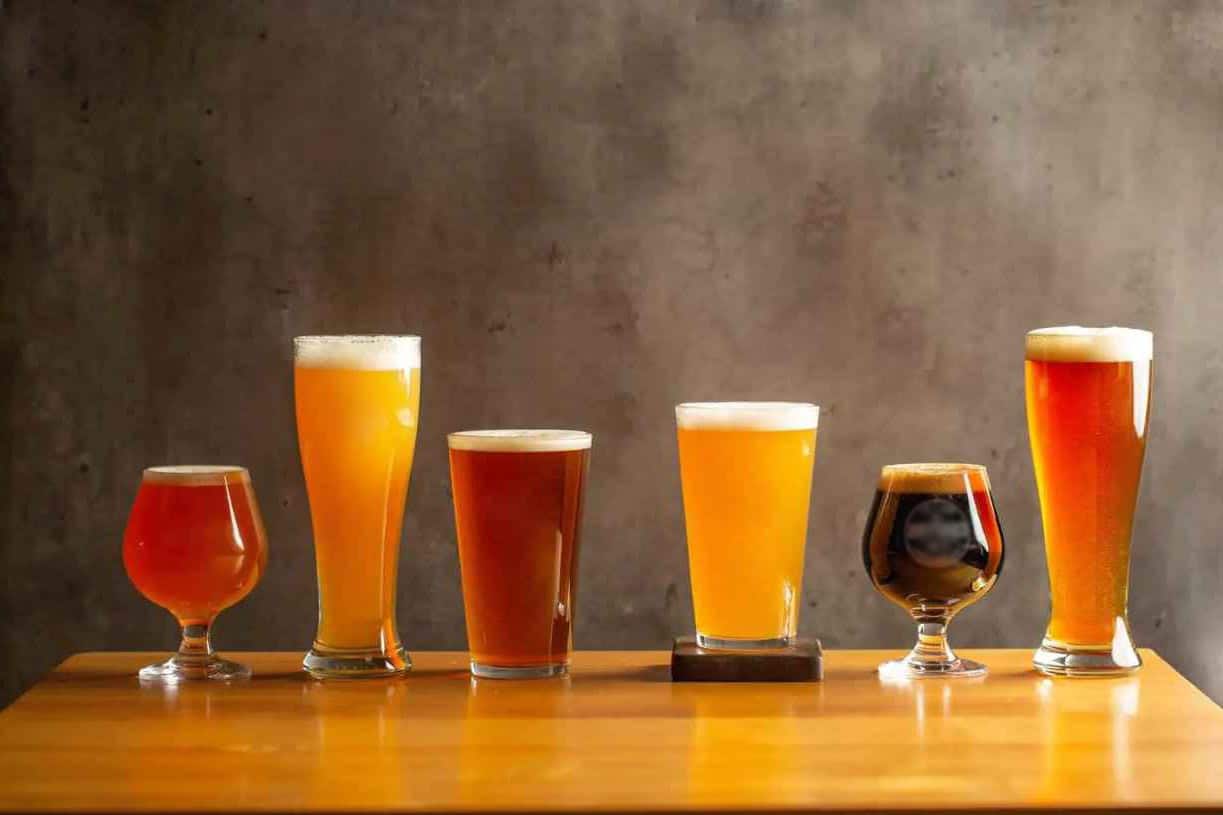In the beer world, there’s something for everyone. Some people like their beers strong, and others enjoy light beers.
Others go for full-bodied beers for their creamy textures. Others just want something refreshing to wind down a hot day. Some people like hoppy beers, and some want something a little sweet and friendly to the palate.
Ladies and gentlemen, let me introduce Sweet Beer. A beer that, as its name suggests, is sweeter than your average beer. Sweet Beer is a pint for people who are not fond of the beer taste or future enthusiasts looking to get their feet wet as they embrace our beloved beer world.
Today we are demystifying the enigma that is Sweet Beer. How different is it from other beer styles? How do you brew it? Plus, the brands of Sweet Beer available in the beer market today. But before we get into all this, what is Sweet Beer?
What is Sweet Beer?
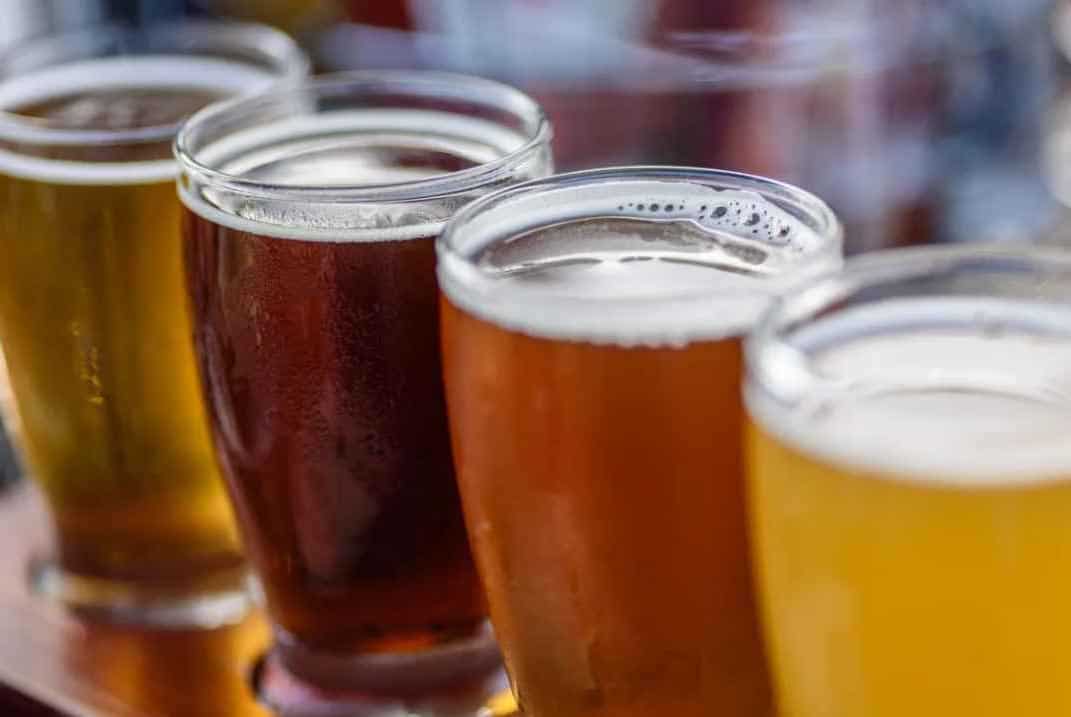
Sweet beer could mean a lot of things, depending on who you ask. But I’ll start by telling you what it’s not before we figure out what it is. Makes sense?
Sweet beer is not a beer style. But it is a means to describe a beer’s flavor, pronounced sweetness. HomebrewAdvice.com defines sweet beer as one without the typical beer flavor. I know it sounds vague.
But we can agree on one thing; sweet beers are sweet. Not as sweet as a soda but sweeter than your typical beer. The sweet flavor profile is the main motivation for its other names; Girly Beer and Dessert Beer.
“Girl Beer,” ooh, I don’t know about that name. In this PC climate? Anyway, I digress; let’s look at the properties of Sweet Beer.
Characteristics of Sweet Beers
So what can you expect from Sweet Beer? I’ll tell you:
- A pronounced sweet flavor
- Low to moderate hop bitterness
- A rich and full-bodied mouthfeel
- Rich malty flavors; caramel, toffee, and chocolate notes
- Low to medium alcohol content levels
- Occasionally, you’ll get fruity or spicy undertones
- They taste like dessert in a glass
Differentiating Sweet Beers From Other Beer Styles

As I said before, Sweet Beer is not a style of beer. It is a class of beers with pronounced sweet flavors. An Ale can be a Sweet Beer as equally as a Lager can be a sweet beer. So what makes Sweet Beers different from your typical beer styles?
- Sweet Beers are Sweeter: The most defining characteristic of Sweet Beer is its prominent sweetness. Sure, they come in varying degrees of sweetness, but Sweet Beers are brewed to showcase this character. A brewer will often use large quantities of malt to extract this sweetness. This brings us to our next point.
- Sweet Beers are Malt-Heavy Flavor: The sweetness has to come from somewhere. An excellent source is malted grains. Using large quantities of malt has its effects. It makes the wort sweeter, and it also imparts a malty character to the beer. Sweet Beers have a prominent malty character which bleeds into the beer’s aroma and tasting notes. You can expect tasting notes like toffee, caramel, and chocolate notes from sweet beers. Sure, Pilsners and Lagers are also malt-focused beers, and they also come with toffee, chocolate, and caramel notes. But the difference is that these beer styles (Pilsners and Lagers) prioritize a refreshing, crisp, and clean taste profile over a malty flavor. Compared to Pilsners and Lagers, Sweet Beers are malt-central.
- Sweet Beers have a Richer Body: Using all that malt also has an effect on the body and mouthfeel of the beer. Barley malts are rich in protein. The suspended protein in the beer gives Sweet Beer a richer mouthfeel and a full body.
- Sweet Beers are Less Bitter Than Other Beer Styles: Sweet Beers have a suppressed bitterness, mostly because the sweetness is so strong that it overpowers the beer bitterness. IPAs and Pale Ales are the opposite; hop bitterness overshadows malt sweetness.
- Sweet Beers are Lower or Average in Alcohol Content: With all that malt, you’d think that Sweet beers are high in alcohol content. Barley wines come from high-gravity worts, but they are also high in alcohol content. Sweet Beers have moderate to low alcohol content levels.
Types of Sweet Beers
There are three main types of Sweet Beer. And they include fruit-infused beer, dessert beer, and spiced or flavored beer. Let’s explore.
Fruit-Infused Beers
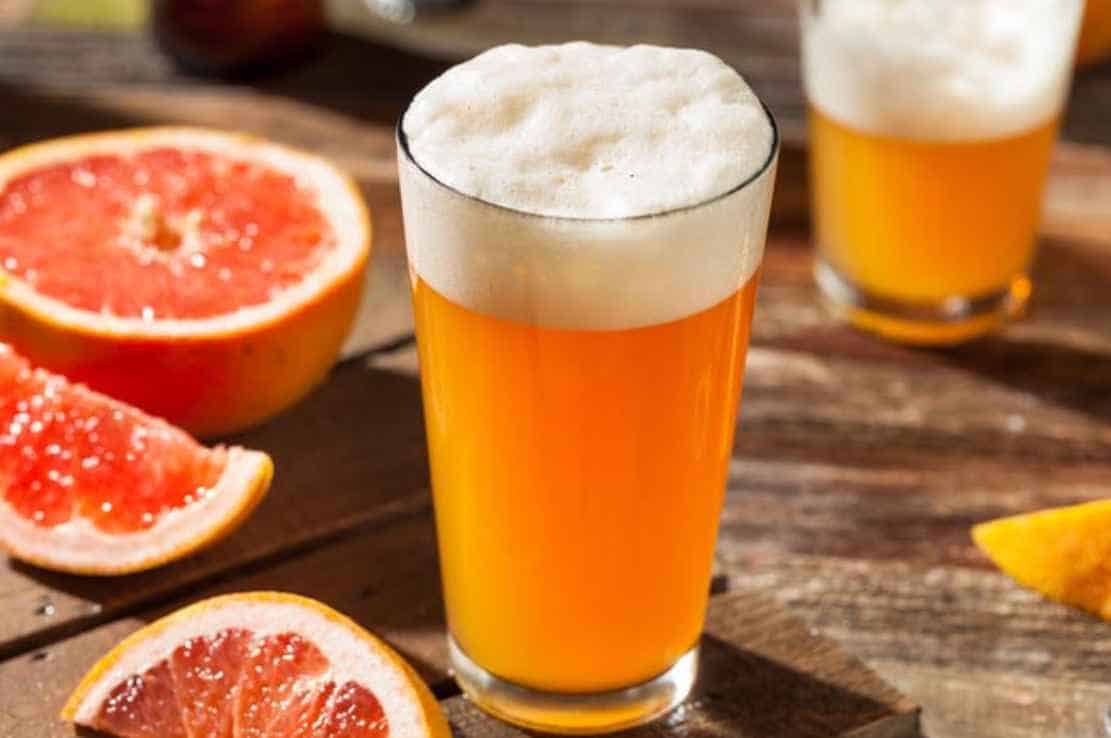
Also known as fruit beer or fruit-flavored beer, fruit-infused sweet beer is a sweet beer that incorporates fruit flavors into its taste profile. What the brewers do is pour fruit extracts into a beer and let it ferment. That way, the base beer (could be a Lager, Wheat Beer, Ale, or Sour beer) adopts a fruity character.
Dessert Beers
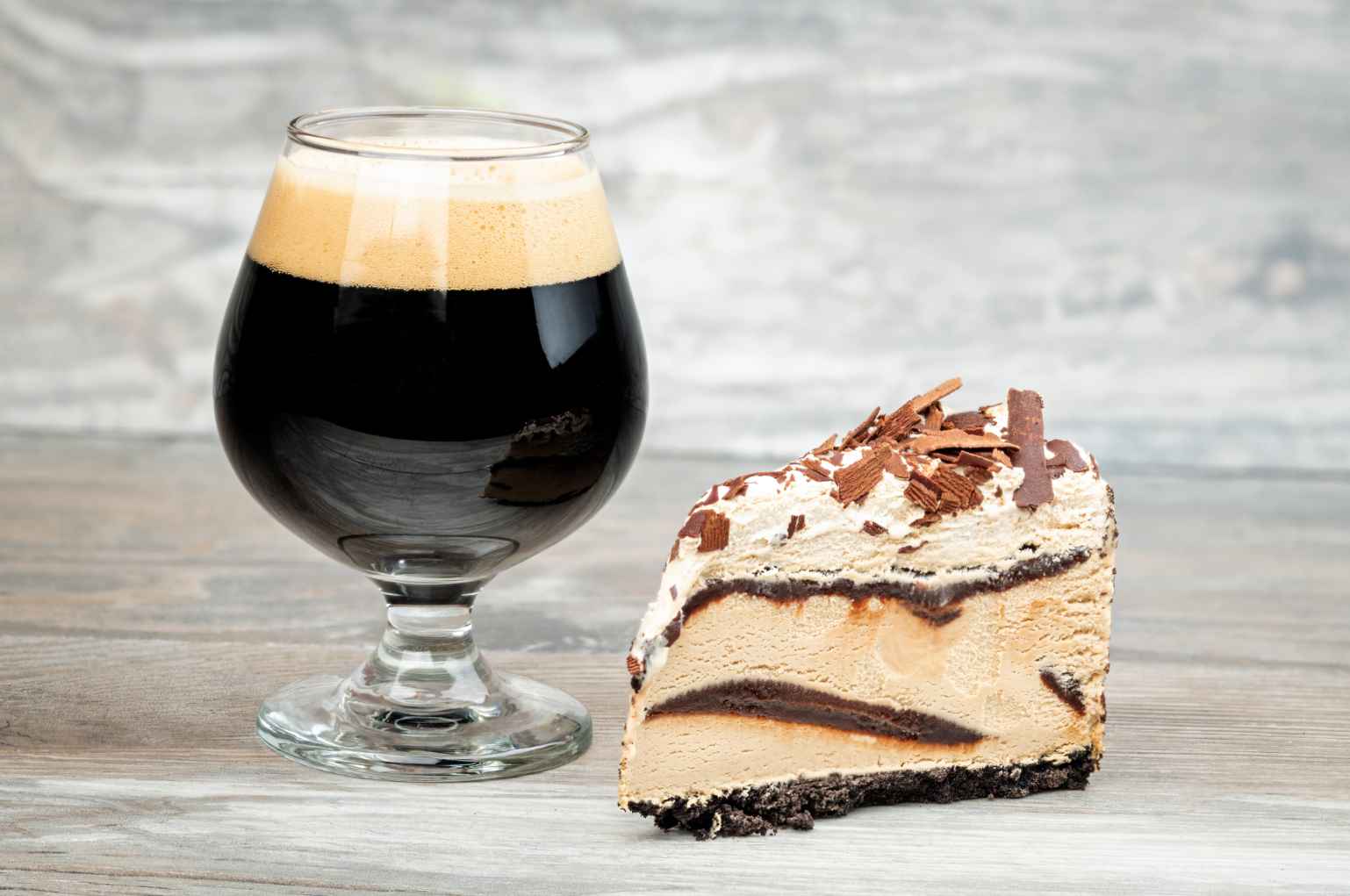
This type of Sweet Beer also has many aliases. It’s acceptable to call it dessert sweet beer or pastry beer. This is a Sweet Beer that’s built to replicate the flavor profiles of common desserts. It is crafted to be sweet, rich, and indulgent. Add in the full body and creamy texture, and you might as well skip dessert.
Forget your stress and get yourself a dessert beer. Isn’t “Desserts” just “Stressed” spelled backward?
Spiced or Flavored Beers
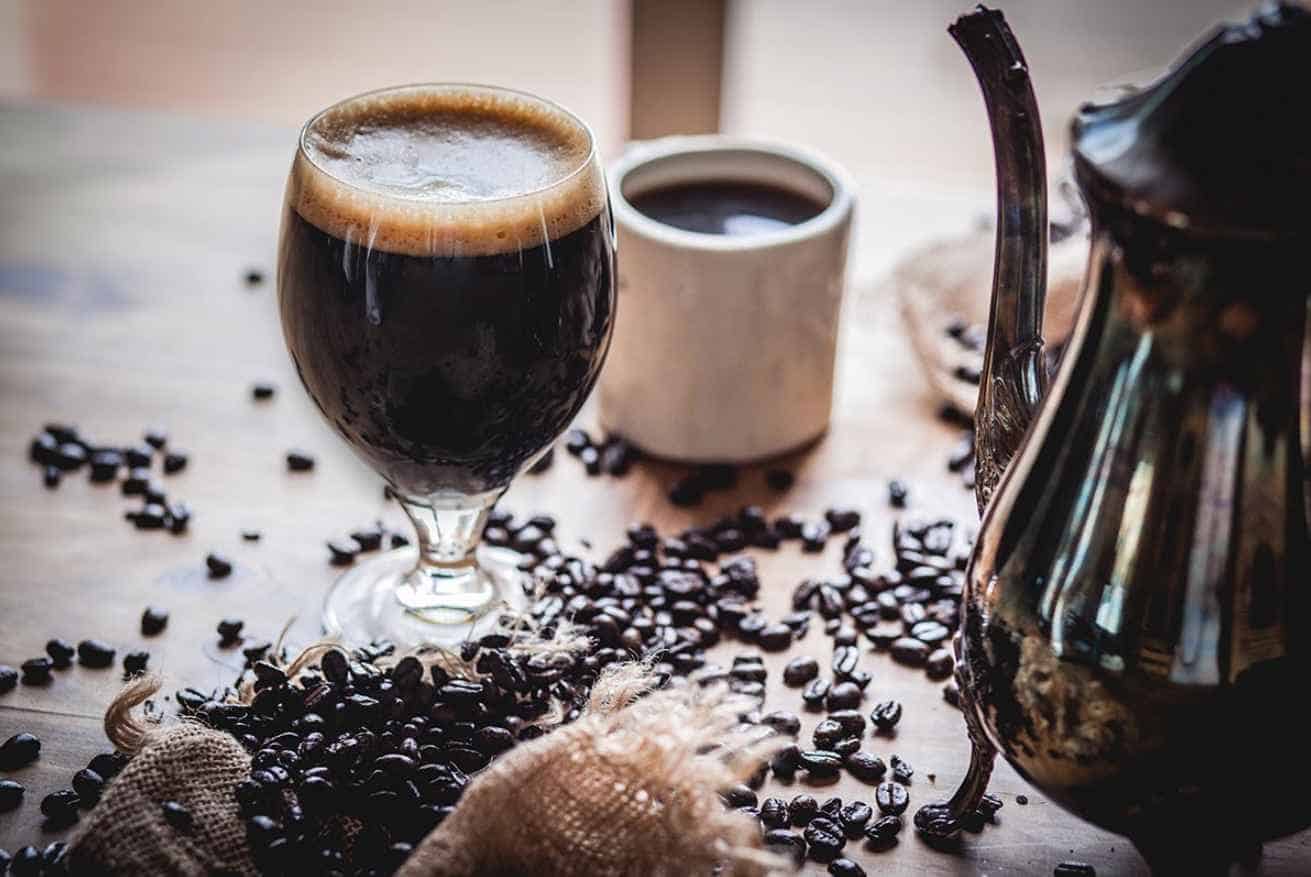
Spiced or Flavored Sweet Beer is one that’s decorated with various spices or additional flavorings. The goal here is to bolster the aroma and taste of the beer by adding herbs, spices, fruits, and other flavors. Different combinations are welcome. Not too many rules here.
Brewing Sweet Beers
How do they make these Sweet Beers anyway? It’s not like a brewer is just adding sugar to turn up the sweetness.
Let’s look at some aspects of brewing Sweet Beer:
Ingredients Used in Brewing Sweet Beers
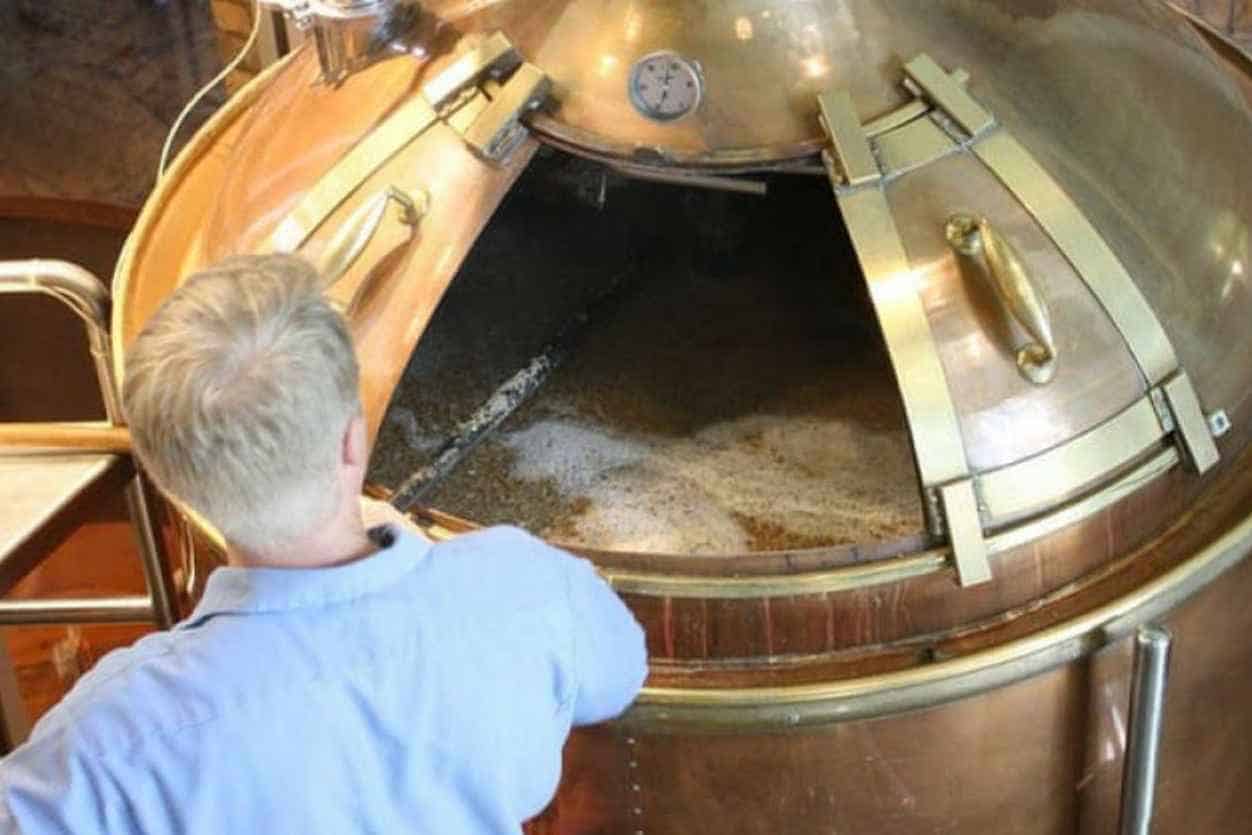
What kind of ingredients are used to brew Sweet Beer? Let’s explore.
- Malt Selection: Sweet Beer is, you know, a sweet beer. And most of this sweetness mostly comes from the malt. So brewers intentionally use malted grains with high residual sugar content. Caramel and Crystal malts are favorites when it comes to brewing Sweet Beer.
- Adjuncts: To help the wort sugar levels cross the finish line, brewers often add sugars from alternative sources. It’s kind of like a shot of adrenaline, a boost of sugar. Honey, molasses, and maple syrup are some common sources of sugar adjuncts. Sugars from these sources are not just for yeast conversion into alcohol. Most of this sugar remains in the beer to bolster taste. Apart from adding flavor to the beer, fruits can also be a great source of sugar. In most cases, brewers will use natural fruits. Picture fruit purees over fruit-flavored artificial sugars.
Techniques for Achieving Sweetness in Beer
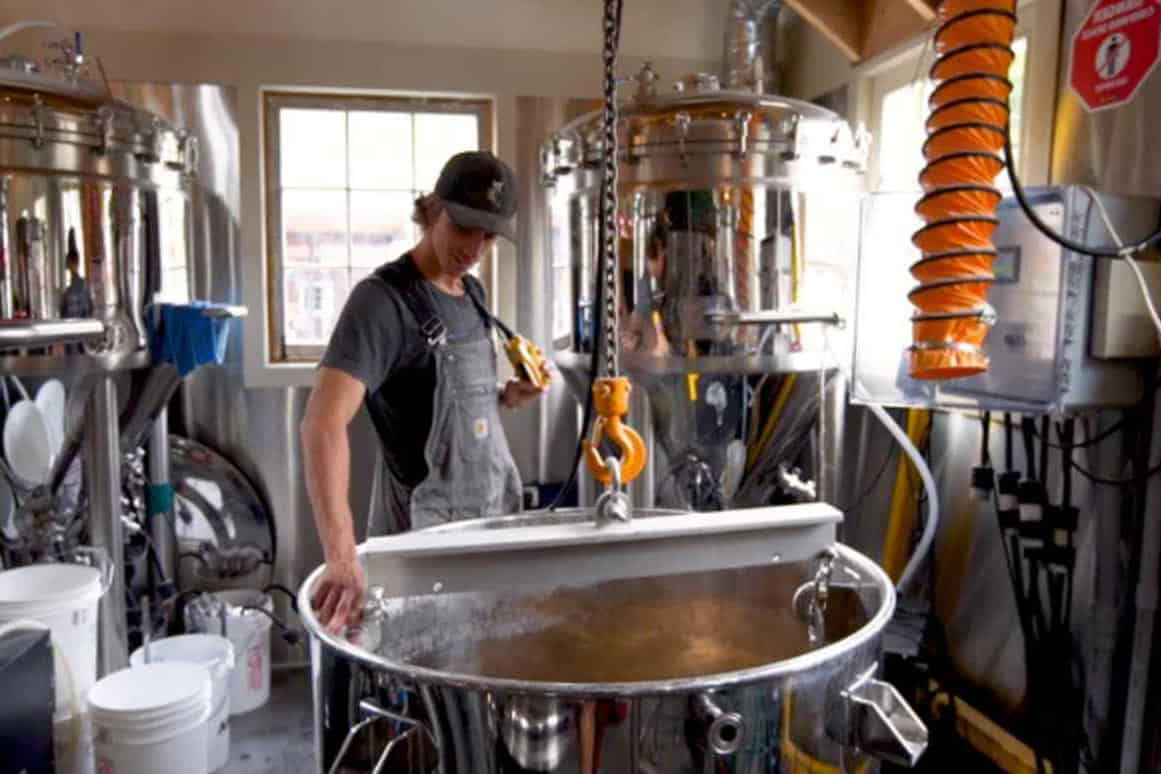
Okay, we know what t expect in terms of ingredients. But what techniques do brewers use to squeeze every ounce of sweetness from these ingredients?
- Choosing the Right Malted Grains: Malt is the primary source of fermented sugars in beer brewing. Why not use malts with high residual sugar content? Caramel and Crystal malts come highly recommended.
- Setting the Right Mash Temperatures: Did you know that mash temperatures can be manipulated to extract more sugar? Usually, we mash our beers at 152°F. But you can turn things up a few units in the neighborhood of 156-158°F to optimize sugar extraction.
- Use of Specialty Ingredients: There are special ingredients that a brewer can add to enhance sweetness. We call these specialty ingredients adjuncts. Common adjuncts used to brew Sweet Beer includes lactose (or milk sugar), honey, molasses, and maple syrup.
- Adding Fruits: Fruit additions bolster both beer flavor and sugar levels. Cherries, raspberries, peaches, and tropical fruits are high in sugar and are highly recommended.
- Yeast Selection: When choosing yeast for Sweet Beer, brewers consider one key feature of yeast; attenuation. Attenuation defines how well yeast converts sugar into alcohol. A high attenuation yeast strain is excellent at its job. It converts more sugar into alcohol. A low-attenuation yeast strain converts less sugar into alcohol. Basically, yeast is our friend and enemy; we need the alcohol, but we also need to retain sugar beyond fermentation. For this, a low-attenuation strain is the best choice.
- Fermentation Control: In addition to being selective with your yeast strains, you can control the fermentation process to retain more sugars. You can stop the process before it reaches its natural conclusion.
Popular Sweet Beer Brands
Which Sweet Beer brands can you find at your local liquor store? Below is a list of popular Sweet Beer brands:
| Sweet Beer Brand | Beer Style | Alcohol Content (% ABV) | Tasting Notes |
| Bud Light Lime | Light Lager | 4.2% ABV | Lime |
| Bud Light Orange | Light Lager | 4.2% ABV | Orange |
| Blue Moon Belgium White | Witbier | 5.4% ABV |
|
| Dundee Original Honey Brown | Red Lager | 4.5% ABV |
|
| Schofferhofer Hefeweizen Grapefruit Bier | Hefeweizen | 2.5% ABV |
|
| For Pete’s Sake! | Imperial Porter | 9% ABV |
|
| Hoegaarden Original White Ale | Witbier | 4.9% ABV |
|
| Kronenbourg 1664 Blanc | Witbier | 5% ABV |
|
| Corona Extra | American Adjunct Lager | 4.6% ABV |
|
| Organic Chocolate Stout | English Stout | 5% ABV | Chocolate |
Final Thoughts
And that, beerheads, is everything you need to know about the sweet sensation that is Sweet Beer. Remember, Sweet Beer is not a beer style. It is a class of beers with sweet taste profiles. Don’t you find all this talk about Sweet Beer tantalizing? Which Sweet Beer brand are you planning on buying?
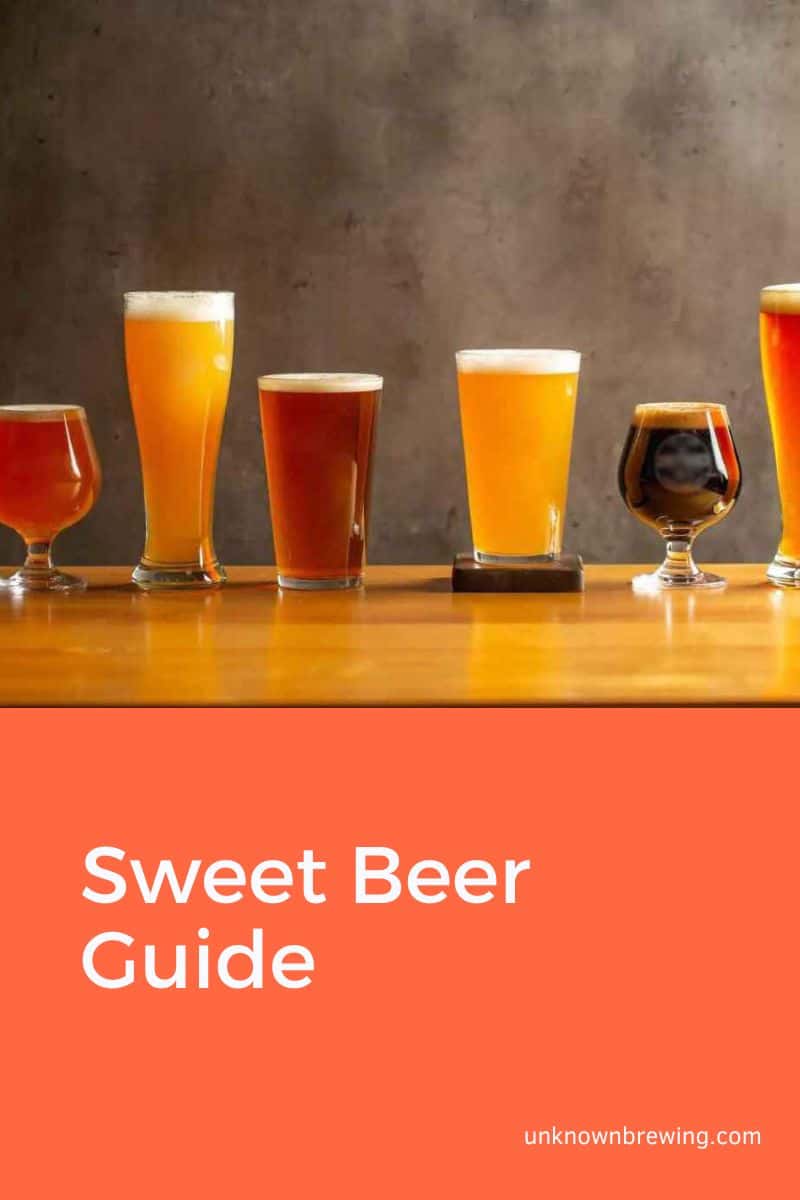

As a homebrewer, Michael would get frustrated about the lack of brewing information on the internet. After hundreds of gallons of spoilt batches, Micheal had enough. And he founded Unknown Brewing as a resource for homebrewers.
